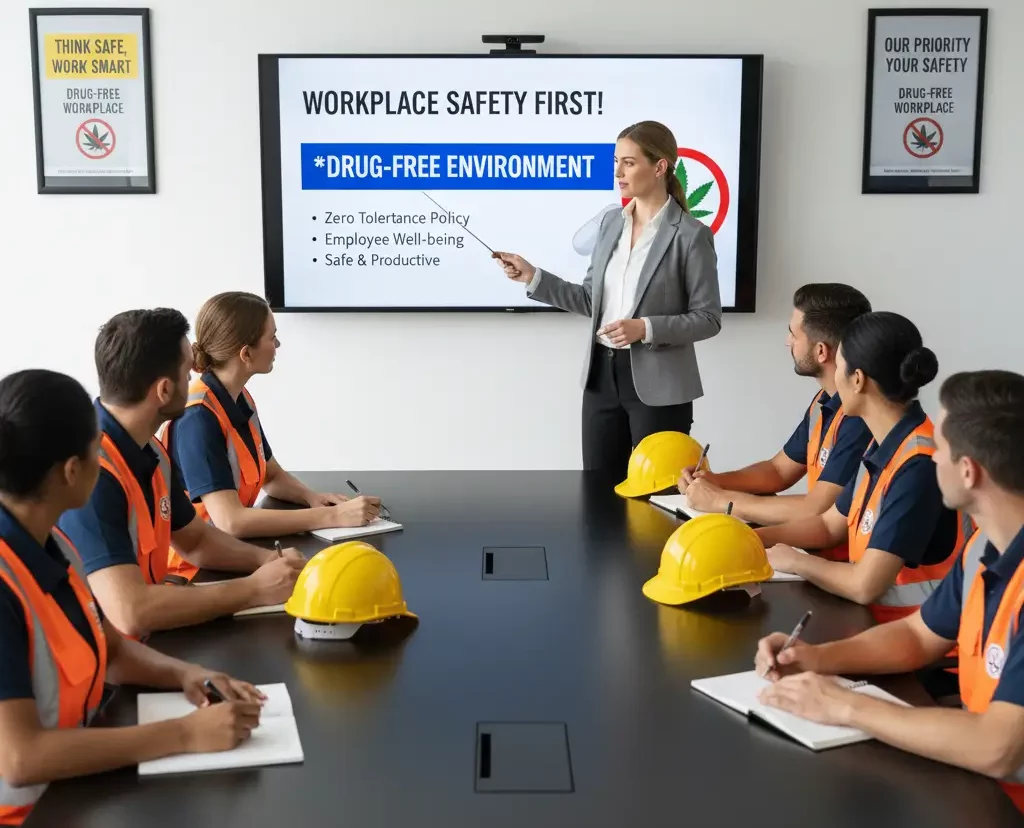A drug-free workplace is not only safer, it’s more productive and motivated. When employees misuse alcohol or drugs, it affects focus, reaction time, judgment, and safety, leading to serious workplace incidents.
According to the Centers for Disease Control and Prevention (CDC), excessive alcohol use costs the U.S. about $249 billion each year, and the National Safety Council (NSC) estimates that drug misuse costs employers over $80 billion annually through absenteeism, injuries, and lost performance.
Creating awareness, setting clear policies, and offering the right support can save lives and strengthen an organization’s culture of safety.
Understanding the Impact of Substance Abuse at Work
Drugs and alcohol directly influence neurotransmitters that control focus and movement. The result? Slower decisions, poor coordination, and higher accident risk.
Common workplace effects include:
-
Lower productivity and attendance
-
Higher accident and injury rates
-
Decline in morale and team trust
-
Increased healthcare and insurance costs
-
Damage to brand reputation
Binge drinking, defined as 5 or more drinks for men or 4 or more for women in 2 hours, is especially dangerous because it significantly slows reaction times and impairs coordination.
Consulting Employees Before Taking Action
An effective drug-free workplace program starts with open communication.
Employers should:
-
Ask employees what they already know about alcohol and drug risks.
-
Listen to their feedback about current policies.
-
Encourage workers to share safety concerns confidentially.
-
Offer resources and training in multiple languages (English and Spanish).
Involving staff early promotes transparency and ensures everyone understands the company’s stance on safety and wellness.
Creating a Workplace Drug & Alcohol Policy
A strong policy demonstrates that your organization takes safety and health seriously.
It should:
-
Clearly define unacceptable behavior and expectations.
-
Emphasize assistance and rehabilitation over punishment.
-
Explain testing procedures and confidentiality.
-
Identify when disciplinary or legal action will be taken (e.g., drug possession at work).
According to SAMHSA’s Drug-Free Workplace Toolkit, supportive policies that combine rules with education reduce incidents and build trust between employers and staff.
Screening & Testing Procedures
Certain safety-sensitive industries, such as construction, transportation, and logistics, may require drug or alcohol testing to comply with federal safety standards.
When implementing testing:
-
Maintain a chain of custody to ensure accurate results.
-
Conduct testing respectfully and protect privacy.
-
Use certified laboratories and trained personnel.
-
Clearly explain the purpose of testing and how results are handled.
OSHA supports drug-free workplaces but reminds employers that post-incident testing should never be used to discourage reporting of injuries (OSHA Clarification, 2018).
Supporting Employees with Substance-Use Challenges
Substance-use disorder is a medical condition, not a moral failure. Supporting employees through recovery reduces turnover and improves loyalty.
Employers can:
-
Provide Employee Assistance Programs (EAPs) or counseling access.
-
Keep all medical details confidential.
-
Temporarily reassign safety-critical roles if impairment poses a risk.
-
Offer online awareness or OSHA-authorized safety courses as preventive tools.
Training employees about hazard recognition and workplace safety helps reduce the temptation and risk of substance misuse on the job.
Why Training Matters
Education is the most powerful prevention tool. A well-trained workforce understands how substance abuse impacts performance, health, and safety.
Through OSHA-authorized training, workers learn:
-
How drugs and alcohol affect reaction time and judgment
-
Their rights under OSHA regulations
-
How to identify unsafe behavior and respond responsibly
-
The importance of hazard reporting and mental-health awareness
Explore professional safety programs designed for your team on OSHAOutreachCourses.com to strengthen your company’s drug-free policy and workplace culture.
Conclusion
Drug and alcohol misuse threaten not just individual health but the entire workplace. By combining clear policies, compassionate support, and quality safety training, employers can reduce risks, lower costs, and create a safer, more focused workforce.
Taking small steps from awareness sessions to online OSHA courses ensures employees stay informed, protected, and empowered to make responsible choices.












